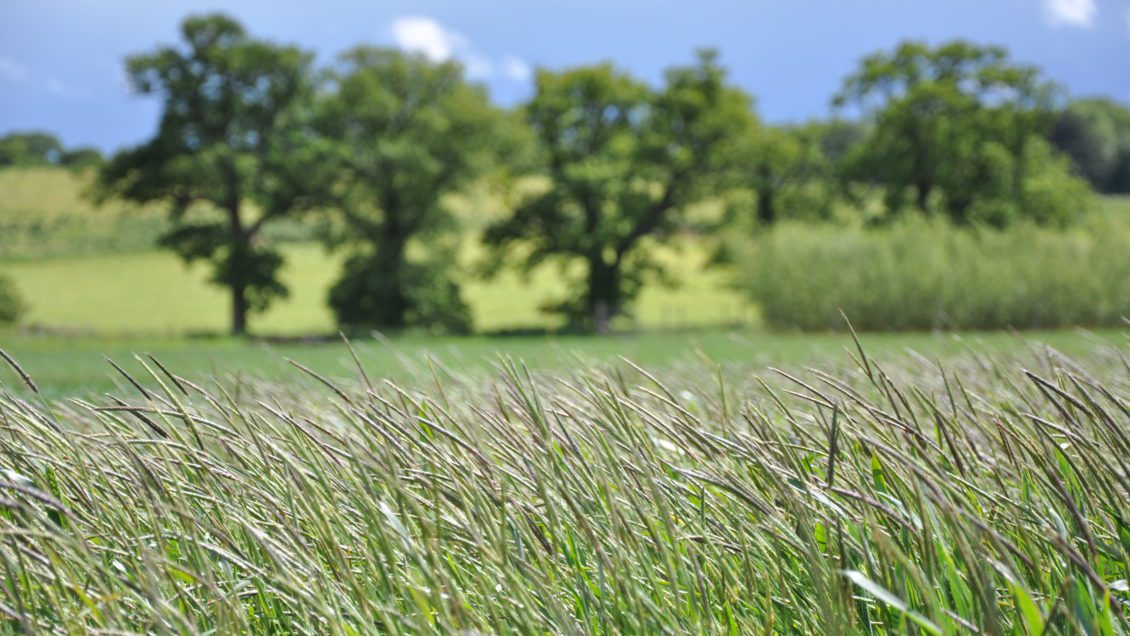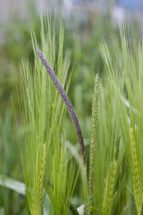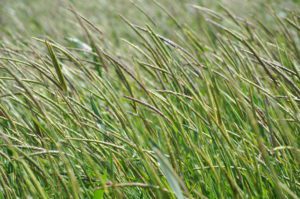
A study of one of the worst weed-control problems facing farmers worldwide – herbicide resistance – has helped a team of scientists determine the genes behind an evolutionary plant trait.
The trait is NTSR, or non-target site herbicide resistance. Clemson University associate professor Christopher Saski is collaborating with researchers from Rothamsted Research in the United Kingdom, the University of Copenhagen in Denmark, and Bayer Crop Science for a study to understand the origins of this trait. The researchers believe this knowledge ultimately may help usher in new herbicides and improved crop management.
“Herbicides are designed to a specific target in plants,” said Saski, an associate professor of systems genetics in Clemson’s Plant and Environmental Sciences Department. Saski graduated from Clemson in 1999 with a bachelor’s degree in microbiology and in 2007 with a doctorate in genetics.
“Historically, the type of resistance farmers have dealt with is called ‘target-site.’ This is where the plant incurs a mutation in the herbicide’s target, resulting in the herbicide no longer being effective so that it no longer kills the weed,” he said.

Photo courtesy of Rothamsted Research.
Target-site resistance typically is linked to a specific herbicide or group of herbicides and is easy to identify and manage. The more complicated problem is “non-target site resistance,” also known as “metabolic resistance.” NTSR involves more changes in the plant than just the target site.
“Non-target site herbicide resistance occurs when the plant is able to detoxify the herbicide or when the herbicide does not reach its intended target,” Saski said. “This form of resistance is much more difficult to identify and manage. This is a really bad situation because it causes the loss of multiple options for weed control.”
The study focuses on black-grass, a grassy weed that is native to Europe and Asia and has been introduced to many other regions of the world, including North America.
Black-grass is considered the most noxious weed of small grains in Europe. It is difficult to control because it is resistant to many herbicides and completes its lifecycle within the cereal crop growing season. It is also a prolific seed producer, with each plant capable of producing thousands of seeds, allowing uncontrolled infestations to grow rapidly.
Efforts have been made to control black-grass with chemistry but that has led to widespread multiple-resistance to herbicides, especially post-emergent herbicides, which are used after the plant has emerged from the soil.
Pre-emergent herbicides (Flufenacet, pendimethalin, or diflufenican) are more effective but NTSR is beginning to threaten these actives too, reducing the available options for controlling this weed.
Researchers at Rothamsted Research have spent years developing the genetic study populations used, two that have independently evolved NTSR and one that was susceptible to herbicides.
To develop a foundation from which to study heritable traits in black-grass, the researchers created a “roadmap” to show where the genes are located on chromosomes. The researchers used genetic analysis techniques to compare the two study populations that uniquely evolved NTSR, to determine genes involved in the trait.
A fundamental question the researchers asked was, “Do traits that evolve independently have the same genetic basis?” Their answer is, “possibly.”
“Whilst we were keen to highlight the genes involved, we also wanted to compare how similar this trait was in different populations,” said David Comont, research scientist at Rothamsted Research. “Understanding how variable this trait is from one population to another can help us understand how best to diagnose and manage this resistance, whilst also shedding light on the evolutionary processes involved.”
The researchers found some overlapping genes involved, as well as some unique ones.
“This suggests this resistance involves a shared ‘core’ set of genes, within a uniquely evolved profile or ‘fingerprint’ from one population to the next,” Saski said.

Since the beginning of time, plants have changed their genetic makeup in response to stresses such as heat, drought, as well as herbicides. Weed resistance to herbicides is increasing worldwide and threatening global food security. Saski said this study can help plan for the future.
“These findings have wide significance for understanding the potential for rapid plant adaptation under novel and changing environments,” Saski said. “Knowledge of the genes (and how they are regulated) that confer NTSR can be used in the design of new monitoring and mitigation strategies as well as novel herbicides, as well as to help combat herbicide-resistant weeds.”
Data were processed using Clemson’s primary high-performance computing (HPC) resource, the Palmetto Cluster. This supercomputer is used by researchers, students, faculty and staff from a broad range of disciplines for a wide range of research.
In addition to Saski and Comont, other researchers involved in the study include Lichun Cai from Clemson, Dana MacGregor and Claudia Lowe from Rothamsted Research; Roland Beffa and Bodo Peters from Bayer Crop Science and Paul Neve from the University of Copenhagen.
A paper about the research has been published in New Phytologist.
-END-
Get in touch and we will connect you with the author or another expert.
Or email us at news@clemson.edu
